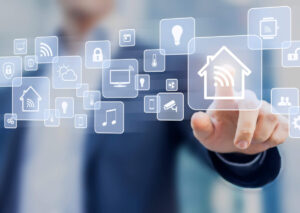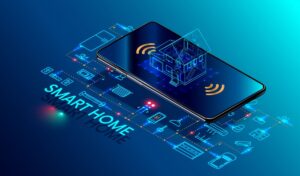
Whether you’re looking at smart bulbs or the capabilities of your new voice assistant, you’ve certainly come across the terms Smart Home and Home Automation and wondered whether there was a difference.
While these two phrases are frequently used interchangeably and are related, they actually refer to slightly different things.
In this article, we’ll show you how they work and exactly how they differ. Let’s delve right in.
What Exactly Is Home Automation?

Home automation is the act of allowing your home to run on its own and follow a set routine every day. For instance, lights that turn on when you get home from work and then dim as the night progresses. These procedures save money and time while also making life easier.
Home automation can help you get things rolling even when you can’t be present to start them. You and your family can also operate them through a hub system using apps or connected tablets.
Home automation is a technology that allows consumers to keep items running even when they are not present. They make life easier to navigate, especially if you keep a constant routine.
How Does Home Automation Work?
The Internet of Things is used in home automation (IoT). These are Internet-connected devices that do not normally connect to the Internet. You may join numerous devices or operate them from apps by connecting to the Internet.
Assume you have Philips Hue smart bulbs and prefer to have them all set up in a specific’scene’ when watching movies (scene is general purpose term that refers to the a bunch of smart home devices set to a specific state). Opening the app on your phone, pressing the button for the correct scene, and then starting your movie– and then when you stop (or press pause), opening the app again, and pressing the button for the scene that you want to return to. If you are into home automation, you could set up an automation that detects when a movie begins to play and then automatically adjusts your lights to your’movie scene,’ returning them to normal when you pause or stop.
Apps can connect to other accounts, such as an Amazon account, and order items through them.
An automated refrigerator, for example, may contain a particular camera or sensor that identifies when a product is running low or being used up. When it hits a particular threshold, the device contacts a grocery ordering app and adds it to the shopping list.
Connecting devices to the Internet of Things allows them to speak with one another and work as part of a larger system.
Connected devices can know more about situations and help you make better decisions.
A smart stove with a recipe interface, for example, can communicate with a smart fridge and select recipes for which you have components. They can also tell you if you will be able to make a recipe you had planned; for example, if something essential is missing.
This is why smart devices are essential for home automation; a network of interconnected smart devices can collaborate.
What Exactly Is a Smart Home?

A smart home is one that has smart tech built into it. These include items such as a Nest Smart Thermostat or a Ring doorbell. They are incorporated into the structure and communicate with one another via the Internet of Things. You may control them using built-in apps or tablets.
Smart technology is a cutting-edge technology that can make decisions and has parameters to assist them in doing so. They use algorithms to connect data and make connections. While it may sound like something out of a science fiction movie, it is true!
How Do Smart Homes Work?
A smart refrigerator, for example, may detect when condiment bottles are running low. Some use weight sensors to detect this, while others use smart cameras to identify when the contents of a bottle are decreasing. When it exceeds a certain threshold, it can be immediately added to a shopping list and ordered alongside other groceries.
Another example is a device that knows when someone is coming home based on map data and switches on the lights as soon as they arrive.
These can also be programmed to turn off lights when no one is in specified rooms.
Some smart homes and associated equipment can learn from the homeowner’s habits and give tailored recommendations based on what the user enjoys. Other algorithms, such as Spotify, use your Liked Music data to generate new songs that they believe you will appreciate.
Conclusion
The term “Smart Home” in general, refers to a class of electronic gadgets and sensors that may be controlled via your phone, computer, or other devices over the internet (or your local network).
These devices will frequently have their own distinct app or interface that you would use to control devices inside a certain ecosystem– for example, Philips Hue smart-bulbs are Smart Home devices, and the manufacturer maintains its own app that you can use to operate the Philips Hue environment.
Home Automation, on the other hand, refers to a method of utilizing Smart Home gadgets. The concept behind Home Automation is to make these gadgets run automatically, responding to what you do with little to no interaction with any kind of app or physical interface.
And there you have it: the difference between smart homes and home automation. What do you think? Is home automation for you? Do let us know in the comments section below. Cheers!
